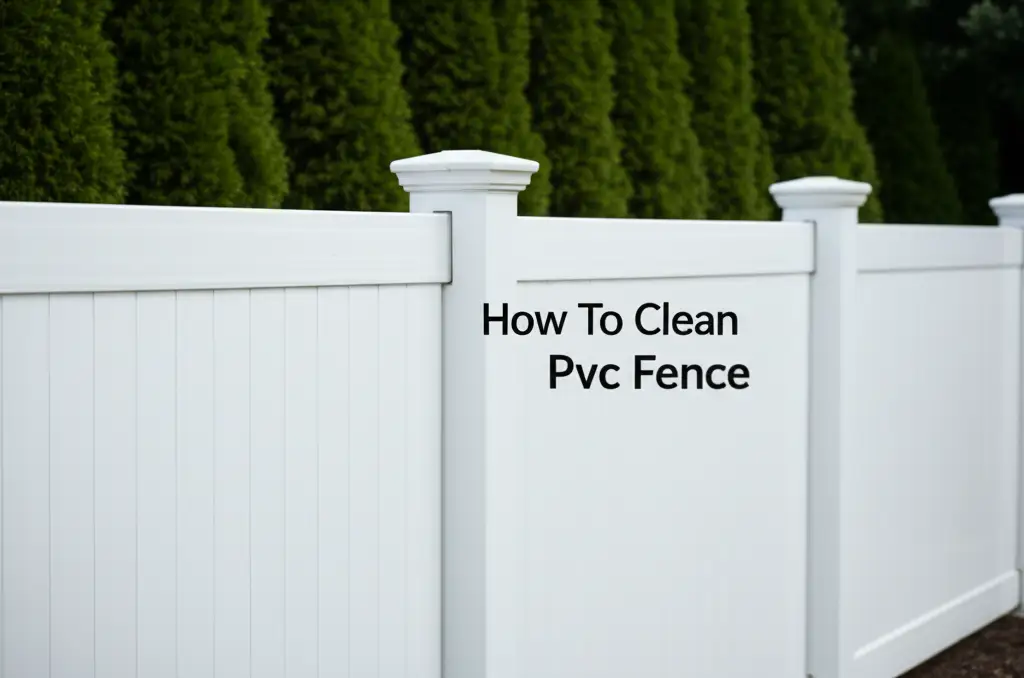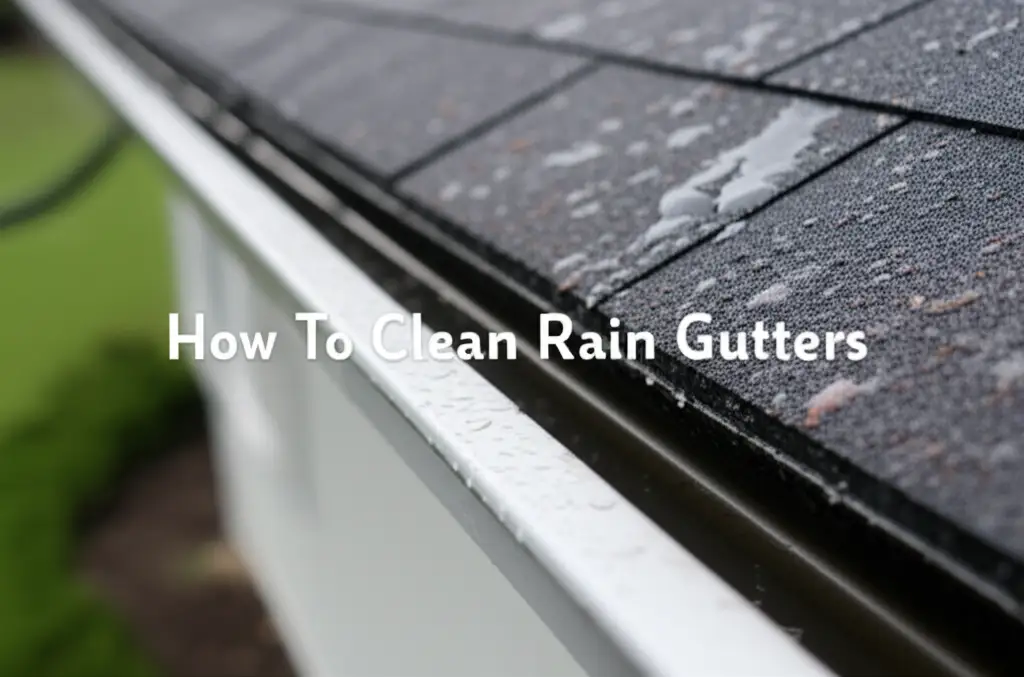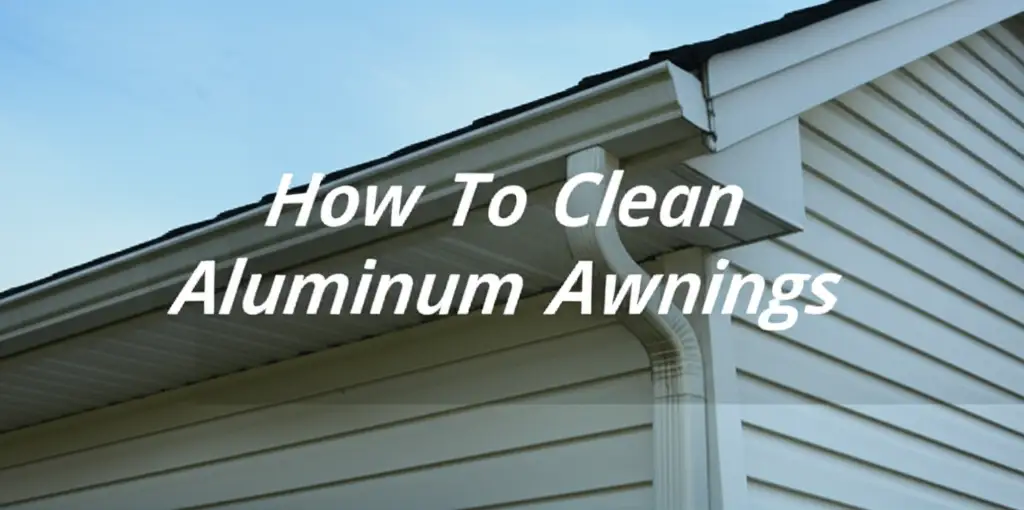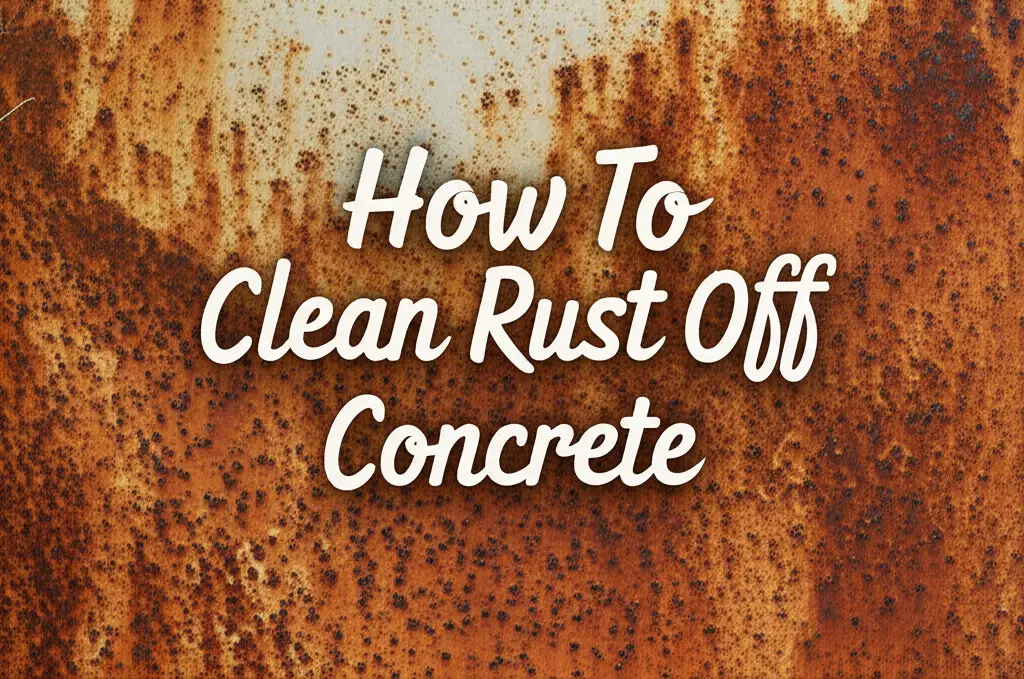· Home Maintenance · 19 min read
How To Clean Pvc Fence

How to Clean Your PVC Fence: The Ultimate Guide
A sparkling clean PVC fence makes a significant difference to your home’s curb appeal. PVC fences, often called vinyl fences, are popular for their durability and low maintenance. However, even these resilient fences gather dirt, grime, mold, and mildew over time. I understand the frustration of seeing your once-bright fence look dull and discolored. Keeping it clean helps it look its best and protects your investment. This guide covers everything you need to know about PVC fence cleaning. We will explore simple steps, effective cleaning solutions, and specific stain removal techniques. You will learn how to make your PVC fence shine again. We also discuss safe pressure washing tips and long-term maintenance strategies. By the end, you will have all the knowledge to tackle any PVC fence cleaning challenge.
Takeaway:
- Regular cleaning prevents dirt and grime buildup on PVC fences.
- Use mild soap and water for routine maintenance.
- Vinegar or bleach solutions can remove stubborn mold and mildew.
- Pressure washing is effective but requires caution to avoid damage.
- Address stains like rust or grease with specific cleaning agents.
Cleaning your PVC fence restores its bright, clean appearance. Start by rinsing the fence to remove loose debris. Then, apply a gentle cleaning solution like dish soap and water. Scrub the surface with a soft brush or cloth. For tougher stains or mildew, use a mix of vinegar or a diluted bleach solution. Rinse the fence thoroughly afterwards to remove all cleaning agents.
Understanding Your PVC Fence and Its Cleaning Needs
PVC fences, also known as vinyl fences, are a common choice for many homeowners. People choose them for their strong build and long life. These fences resist rot, rust, and insect damage. They do not need painting or staining like wood fences. This makes them seem almost maintenance-free. However, even the most durable materials need some care. Your PVC fence will still collect dirt, grime, and environmental buildup.
Over time, you might notice green algae, black mold, or mildew growing on the fence surface. Pollen, dust, and general outdoor debris also stick to the fence. Rain can wash some of this away, but not all of it. Hard water stains can leave mineral deposits. Rust from nearby metal objects might also mark the PVC. These issues make your fence look dirty and aged. Regular cleaning keeps your fence looking new. It also prevents dirt and mold from embedding deeply into the material. Understanding these common problems helps you choose the best cleaning method for your fence. I always advise inspecting your fence first to see what kind of dirt you are dealing with.
Gathering Your PVC Fence Cleaning Essentials
Before you start cleaning your PVC fence, gather all the necessary supplies. Having everything ready makes the job faster and easier. You likely have most of these items around your home. For basic cleaning, you will need a few simple tools. A garden hose with a spray nozzle is essential for rinsing. A bucket for mixing solutions is also key.
Choose a soft-bristled brush or a soft cloth for scrubbing. Avoid abrasive scrubbers that could scratch the PVC surface. When it comes to cleaning solutions, mild dish soap and warm water are your starting point. This mix handles general dirt and grime well. For tougher problems like mold or mildew, you will need stronger options. White vinegar is a natural and effective choice for these issues. You can mix it with water. Another option is a diluted bleach solution, but use this carefully. Commercial PVC or vinyl fence cleaners are also available. These products are formulated specifically for your fence material. Always read the label of any commercial cleaner before use. I find it helpful to have a variety of options ready.
Here is a list of essential cleaning supplies:
- Garden hose with spray nozzle: For initial rinsing and final wash.
- Two large buckets: One for clean water, one for cleaning solution.
- Soft-bristled brush or sponge: For gentle scrubbing without scratching.
- Soft cloths or rags: For wiping and drying.
- Mild dish soap: Your go-to for general dirt.
- White vinegar: Excellent for mold, mildew, and hard water stains.
- Household bleach (optional): Use diluted for tough mold, with caution.
- Commercial PVC fence cleaner (optional): Designed for specific fence issues.
- Protective gear: Rubber gloves, eye protection.
Step-by-Step Guide to Basic PVC Fence Cleaning
Cleaning your PVC fence does not have to be a difficult task. I find that a simple, methodical approach yields the best results. This method is great for general dirt, dust, and light grime that builds up over time. It is also an excellent routine to follow regularly to keep your fence looking pristine. Starting with a gentle approach is always best to protect the fence material. If you have a vinyl fence, these steps apply directly to it as well.
1. Prepare the Area
First, clear the area around your fence. Move any outdoor furniture, potted plants, or decorations away from the fence line. This gives you clear access to all fence surfaces. It also protects your belongings from water and cleaning solutions. If you have delicate plants or landscaping near the fence, cover them with plastic sheeting. This prevents accidental exposure to cleaners, especially if you plan to use stronger solutions later. I always take a few minutes to prepare; it saves time and hassle in the long run.
2. Rinse the Fence Thoroughly
Use your garden hose with a good spray nozzle to rinse the entire fence. Start from the top and work your way down. This initial rinse removes loose dirt, dust, spiderwebs, and any large debris. It helps loosen caked-on mud or grime, making the scrubbing process easier. Ensure you spray both sides of the fence if accessible. This step is crucial for preparing the surface for cleaning.
3. Apply a Mild Cleaning Solution
For most basic cleaning needs, a simple solution of mild dish soap and warm water works wonders. Mix about ¼ cup of dish soap into a gallon of warm water in a bucket. This creates a gentle yet effective cleaning agent. Alternatively, you can use a solution of white vinegar and water. Mix equal parts white vinegar and water for a natural cleaner that is effective against light mildew. This solution is also good for general dirt.
4. Scrub the Fence
Dip your soft-bristled brush or sponge into the cleaning solution. Start scrubbing the fence panels from top to bottom. Use gentle, circular motions to work the solution into the fence surface. Pay attention to any areas with visible dirt or grime buildup. The soft bristles will lift the dirt without scratching the PVC. Work in small sections to ensure the solution does not dry on the fence before you can rinse it. I always find that a consistent, steady scrub is more effective than aggressive, quick movements.
5. Rinse Again
After scrubbing a section, immediately rinse it thoroughly with your garden hose. Make sure to wash away all the soap or vinegar solution. Leftover residue can attract more dirt over time or leave streaks. Rinse from top to bottom to ensure all cleaning agents drain off the fence. Repeat steps 4 and 5 until you have cleaned the entire fence. This two-part process ensures a clean finish.
6. Inspect and Spot Clean
Once you have rinsed the entire fence, take a moment to inspect your work. Look for any missed spots or areas where dirt remains. If you find any, apply a bit more cleaning solution directly to those areas. Scrub them again, then rinse. This spot-cleaning ensures an even, spotless finish across your entire PVC fence. This basic cleaning routine will keep your fence looking neat and tidy.
Pressure Washing Your PVC Fence Safely and Effectively
Pressure washing can be a very efficient way to clean a PVC fence, especially for larger fences or heavy dirt. It saves a lot of time and effort compared to manual scrubbing. However, using a pressure washer requires care. If you use too much pressure or the wrong nozzle, you can damage the PVC material. High pressure can cause etching, chipping, or even crack the fence panels. My rule of thumb is always to start with the lowest pressure setting.
How to Pressure Wash Safely
- Choose the Right Pressure Washer and Nozzle: You do not need a very powerful pressure washer for PVC fences. A model with 1500-2000 PSI is usually sufficient. Use a wide-angle nozzle, such as a 25-degree or 40-degree tip. These nozzles provide a broader, less intense spray. Never use a zero-degree or rotating nozzle, as these concentrate too much pressure in one spot.
- Test in an Inconspicuous Area: Before spraying the entire fence, test a small, hidden section first. This could be a bottom corner or the back side of a post. Observe how the PVC reacts to the pressure. Adjust your distance and pressure setting until you find a safe and effective combination. This step helps prevent accidental damage to your visible fence areas.
- Maintain a Safe Distance: Hold the pressure washer wand at least 12 to 18 inches away from the fence surface. This distance helps diffuse the pressure. Moving closer increases the force and risk of damage. If the fence is still dirty at this distance, try moving slightly closer in small increments, or consider using a cleaning solution first.
- Use a Cleaning Solution (Optional): Many pressure washers have a detergent tank. You can fill this with a mild, pressure-washer-safe cleaning solution like dish soap or a specialized fence cleaner. Apply the solution to the fence first using a low-pressure setting. Let it sit for a few minutes to break down dirt and grime. This pre-soak often makes cleaning much easier.
- Wash in Sections: Work on the fence in manageable sections, from top to bottom. Overlap your passes slightly to ensure even cleaning. Keep the spray wand moving constantly. Do not dwell on one spot, as this can concentrate pressure and cause damage.
- Rinse Thoroughly: After applying and scrubbing with the cleaning solution, switch to a clean water rinse. Again, work from top to bottom, ensuring all soap residue is removed. Leftover soap can leave streaks or attract new dirt.
- Watch for Damage: During and after pressure washing, inspect your fence for any signs of damage. Look for streaks, discolored spots, or surface etching. If you notice any issues, adjust your technique immediately.
While pressure washing can clean a vinyl fence quickly, manual scrubbing with a soft brush remains the safest method for delicate areas or very dirty spots. I often combine both. I use the pressure washer for general cleaning and a brush for stubborn stains.
Tackling Stubborn Stains on Your PVC Fence
Even with regular cleaning, your PVC fence might develop stubborn stains. These can range from common organic growth to mineral deposits and rust. Different types of stains require specific treatment methods. Do not worry; most stains on PVC are removable with the right approach. I have found that identifying the stain type helps you choose the most effective cleaner.
Removing Mold and Mildew
Mold and mildew are common issues, especially in damp, shaded areas. They appear as green, black, or sometimes pinkish patches. For these stains, a solution of white vinegar is highly effective. Mix equal parts white vinegar and water in a spray bottle. Spray the solution directly onto the moldy areas. Let it sit for 10-15 minutes. The acid in the vinegar helps break down the mold. Then, scrub the area with a soft brush and rinse thoroughly. For very stubborn mold, a diluted bleach solution might be necessary. Mix one part bleach with ten parts water. Apply carefully, let it sit for a few minutes, then scrub and rinse immediately. Always wear gloves and eye protection when using bleach. For more insights on dealing with mold, you can look at tips for cleaning mold in a shower or cleaning mold with vinegar, as the principles are similar.
Eradicating Rust Stains
Rust stains often come from nearby metal objects, like sprinkler heads or garden tools. These stains appear as orange or brown streaks. Standard cleaners usually do not remove them. For rust, you need an oxalic acid-based cleaner. Many commercial rust removers for outdoor surfaces contain this ingredient. Apply the rust remover directly to the stain according to product instructions. Let it dwell for the recommended time, then scrub gently and rinse. Be careful with these products, as some can be strong. Test in a small area first.
Dealing with Grease and Oil Stains
Grease or oil stains can occur from barbecues, car maintenance, or other outdoor activities. These stains require a degreaser. Start with a strong dish soap solution, applied directly to the stain. Let it sit for a few minutes to emulsify the grease. Then, scrub with a soft brush and rinse with hot water if possible. If dish soap is not enough, a household degreaser or even mineral spirits applied sparingly to a cloth can work. Always rinse thoroughly after using any strong chemical.
Cleaning Scuff Marks and Dirt Rubs
Everyday use can leave scuff marks or general dirt rubs on your PVC fence. These are often from shoes, garden tools, or pets. For these, a magic eraser (melamine foam sponge) is surprisingly effective. Dampen the magic eraser and gently rub the scuff mark. The micro-abrasive nature of the sponge lifts the marks without damaging the PVC surface. Always use light pressure to avoid dulling the finish.
Hard Water Stains and Mineral Deposits
If you live in an area with hard water, you might see white, chalky stains on your fence. These are mineral deposits. White vinegar is excellent for these. Spray undiluted white vinegar onto the affected areas. Let it sit for 5-10 minutes to dissolve the minerals. Then scrub with a brush and rinse. Repeat if necessary. This method is also effective for cleaning shower with vinegar, so the technique translates well.
When tackling stubborn stains, I always recommend patience and persistence. Sometimes a stain requires multiple applications or a bit more dwell time for the cleaner to work. Always rinse thoroughly to ensure no residue is left behind.
Maintaining Your PVC Fence for Long-Lasting Cleanliness
Maintaining a clean PVC fence is much easier than tackling a severely neglected one. Regular maintenance is key to preventing major dirt and stain buildup. It ensures your fence always looks its best. I find that a consistent, simple routine saves a lot of time and effort in the long run. Think of it as preventative care for your home’s exterior.
Establish a Regular Cleaning Schedule
The frequency of cleaning depends on your environment. If you live in an area with high pollen, dust, or humidity, you might need to clean your fence more often. Generally, a good wash at least once a year is a solid starting point. For areas prone to mold or heavy dirt, cleaning every six months or even quarterly might be better. I recommend doing a quick visual check of your fence weekly or monthly. This allows you to spot any new dirt or growth early before it becomes a problem. A proactive approach keeps your PVC fence sparkling without intense effort.
Quick Rinses are Your Friend
Between full cleanings, a quick rinse with a garden hose can do wonders. After a dusty period or a significant storm, just spraying down your fence can remove loose dirt and debris. This prevents dirt from bonding to the PVC surface. It also helps wash away pollen and light organic matter. I often do this when I am watering my plants. It takes minimal extra time but makes a big difference in maintaining overall cleanliness.
Address Stains Promptly
Do not let stains sit on your PVC fence for too long. The longer a stain remains, the harder it is to remove. If you notice a rust streak, a patch of mold, or a grease spot, try to clean it as soon as possible. Fresh stains are much easier to tackle with mild cleaners. Ignoring them allows them to set deeper into the material. Keeping a small spray bottle of diluted vinegar or mild soap solution handy for quick spot treatments is a good idea.
Keep Surrounding Areas Clean
Your fence’s cleanliness is influenced by its surroundings. Trim back any bushes or trees that are touching the fence. Overhanging branches can drop sap or leaves, creating stains. They also create shaded, damp conditions perfect for mold and mildew growth. Ensure good drainage around the fence line to prevent standing water. Standing water can contribute to algae and mold. Also, keep sprinklers from directly spraying the fence, as this can lead to hard water stains. By managing the immediate environment, you reduce the sources of dirt and grime. This is an essential part of fence care, even if your PVC fence does not need staining.
Consider Protective Coatings
Some homeowners apply a protective coating or sealant designed for PVC or vinyl. These coatings can create a smoother surface that resists dirt and grime adhesion. They might also offer some UV protection, helping to prevent yellowing over time. Research specific products and ensure they are compatible with your PVC fence. Always follow the manufacturer’s application instructions carefully. This extra step can extend the time between deep cleanings and maintain your fence’s bright appearance.
Environmental Considerations and Safety Tips for PVC Fence Cleaning
Cleaning your PVC fence involves using water and cleaning solutions. It is important to consider the environment and your own safety during the process. I always prioritize safety and eco-friendliness in my cleaning projects. These considerations ensure that you protect yourself, your family, your pets, and the surrounding environment.
Protecting Your Plants and Lawn
Many cleaning solutions, especially those containing bleach or strong chemicals, can harm plants. Before you start cleaning, wet down any nearby vegetation with plain water. This dilutes any runoff that might splash onto them. You can also cover delicate plants with plastic sheeting or tarps. After cleaning, rinse the plants again with clean water. This helps wash away any residue before it can cause damage. Using mild, biodegradable soaps is also a greener choice for your lawn and garden.
Safe Disposal of Cleaning Solutions
Do not pour leftover cleaning solutions directly into storm drains. These drains often lead to local waterways, and chemicals can pollute them. Instead, pour diluted solutions onto an area of your lawn or driveway where they can safely dissipate. For stronger chemicals like bleach, ensure they are highly diluted before disposal. If you have a large amount of undiluted cleaning chemical, check your local waste disposal guidelines. Many communities have specific instructions for hazardous waste.
Choosing Eco-Friendly Cleaners
Whenever possible, opt for natural and eco-friendly cleaning agents. White vinegar is an excellent choice for mold, mildew, and general dirt. It is biodegradable and safe for the environment. Mild dish soap is also a relatively safe option. Look for products labeled “biodegradable” or “eco-friendly” if you choose a commercial cleaner. These products often have fewer harsh chemicals. They break down more easily in the environment. This reduces their impact on local ecosystems.
Personal Safety Measures
Your safety should always come first. When working with any cleaning solutions, wear appropriate protective gear.
- Gloves: Rubber gloves protect your skin from irritation and dryness.
- Eye Protection: Safety glasses or goggles shield your eyes from splashes, especially when using pressure washers or strong chemicals.
- Long Clothing: Wear long-sleeved shirts and pants to minimize skin exposure.
- Footwear: Wear closed-toe shoes with good grip to prevent slips, especially on wet surfaces.
If you are using bleach or other strong fumes, ensure good ventilation. Work outdoors on a breezy day if possible. Avoid inhaling the fumes directly. If you experience skin irritation or eye contact, rinse the affected area immediately with plenty of water. Seek medical attention if irritation persists. I always ensure I have fresh air around me when using any type of cleaner.
By following these environmental and safety guidelines, you can clean your PVC fence responsibly. You protect both yourself and the natural world around your home.
FAQ Section
How often should I clean my PVC fence?
The frequency depends on your local environment. In most areas, cleaning your PVC fence once a year is sufficient for general dirt and grime. If you live in a humid climate or an area with a lot of dust, pollen, or trees, you might need to clean it every six months or even quarterly to prevent stubborn mold and mildew growth. Regular visual checks help determine when a cleaning is needed.
Can I pressure wash my PVC fence?
Yes, you can pressure wash a PVC fence, but with caution. Use a pressure washer with a low PSI setting (around 1500-2000 PSI) and a wide-angle nozzle (25-degree or 40-degree tip). Hold the wand at least 12-18 inches away from the fence surface. Test in an inconspicuous area first. Too much pressure or too close a distance can damage the PVC material.
What is the best cleaner for mold and mildew on a PVC fence?
For mold and mildew, a solution of equal parts white vinegar and water is a highly effective and eco-friendly option. Spray it on, let it sit for 10-15 minutes, then scrub and rinse. For very stubborn mold, a diluted bleach solution (1 part bleach to 10 parts water) can be used, but always wear protective gear and rinse thoroughly afterward.
How do I remove rust stains from my PVC fence?
Rust stains on PVC fences require a cleaner specifically designed to remove rust. Look for products containing oxalic acid. Apply the rust remover directly to the stain according to the product instructions. Allow it to dwell, then scrub gently with a soft brush and rinse thoroughly. Always test the product on a small, hidden area first.
Is bleach safe to use on a PVC fence?
Bleach can be safe for PVC fences when diluted properly. Mix one part household bleach with ten parts water. Use this solution for tough mold and mildew stains. Always wear protective gloves and eye protection. Rinse the fence thoroughly immediately after scrubbing to prevent any potential damage or discoloration to the PVC and protect nearby plants.
Will cleaning my PVC fence make it look new again?
Yes, cleaning your PVC fence can significantly restore its appearance. Removing dirt, grime, mold, mildew, and stains will bring back its original bright, clean look. Regular cleaning prevents buildup that can dull the fence over time, making it look almost new. For long-term maintenance, consider quick rinses and addressing new stains promptly.
Conclusion
Keeping your PVC fence clean is a simple yet rewarding task. You now have a complete guide to make your PVC fence shine again. We covered everything from understanding common dirt and stains to selecting the right tools and cleaning solutions. You learned step-by-step methods for general cleaning and tackling stubborn issues like mold, rust, and grease. We also explored how to use a pressure washer safely. You now know the importance of regular maintenance and environmental considerations. By following these practical tips, you ensure your PVC fence remains a bright and attractive feature of your property. Regular PVC fence cleaning not only improves curb appeal but also protects your investment. Start your fence cleaning project today. Enjoy the satisfaction of a beautifully clean and well-maintained outdoor space.
- PVC fence cleaning
- vinyl fence care
- outdoor cleaning
- mold removal fence
- DIY fence cleaning




